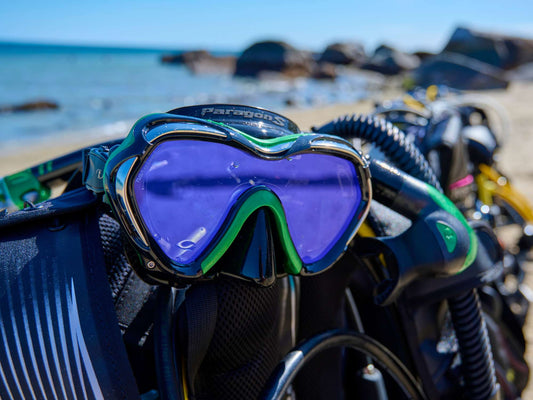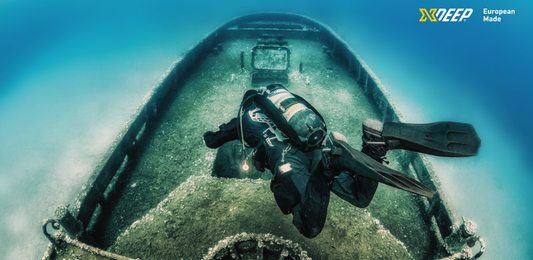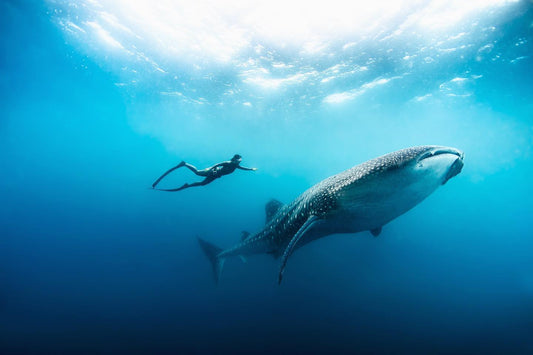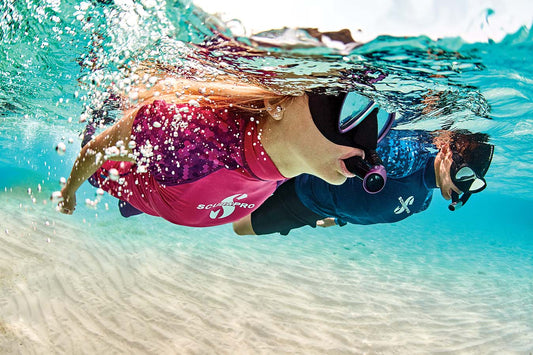For safety reasons when using Self Contained Underwater Breathing Apparatus (SCUBA) the use of an appropriate alternative breathing air (gas) source/secondary life support system is recommended. This can vary depending on location and the training agencies you have received your training from and you must follow how you have been trained. However, it is common practice to use an Auxiliary Emergency Breathing System (AEBS) also known as an Octopus or Alternative Air Source second stage, to fulfill or support this requirement.
An Octopus is a secondary demand valve designed to work in conjunction with the primary demand valve and both are connected to the first stage pressure reducer. The Octopus provides a critical safety backup in cases of primary demand valve failure and may also act as an Alternative Air Source (AAS) for the diving Buddy. (Note: an AAS does not require the Donor diver to remove their own primary demand valve when supplying gas to a Buddy diver who has experienced regulator failure or an out of gas situation). By its very nature this type of apparatus is only expected to be used during emergency situations and will experience very high ventilatory demand as it supports two divers breathing at the same time.
SCUBA single demand regulators capable of meeting the breathing performance requirements of BS EN 250:2000 cannot be relied upon to meet the same performance requirements when used as part of an Octopus system. This is due to requiring twice the performance from the first stage pressure reducer in an already strenuous environment. Reduced breathing performance of some second stage demand valve systems may be experienced when using low performance first stage pressure reducers with poor performing and incompatible second stage demand valves. This may go some way to explaining the number of divers who inexplicably break contact with their buddies during alternative air supply (AAS) ascents using some SCUBA Octopus systems.
As stated in the minimum safety requirements for such products, using an Octopus, in water temperatures lower than 10°C (50°F) and at depths below 30 metres (98ft) carries significant risks and is not recommended. Although these minimum requirements only require an Octopus to be tested and restricted to 30 metres (98ft) and 10°C (50°F) Apeks recognises that emergencies can happen beyond these limits and has designed and has CE approval for our products to far exceed these minimum requirements. This means our octopus match with the performance of the primary demand regulators they are intended to work with, in water temperatures below 10°C (50°F) where stated, and to depths of 50 metres (164ft). You can be confident that in an emergency situation your Apeks regulator can cope with the extra demand of your buddy breathing from your AEBS(Octopus) and safely supply enough gas for you both in any conditions you may be faced with.
If AEBS (Octopus) is used you must ensure that the first stage selected is designed, tested and CE marked for use with two second stages, suitable for use at varying water temperatures and depth. Also that the equipment can be used as an escape device by more than one diver at the same time. (Please see Markings and Abbreviations which explains how you can identify if your product is suitable for these conditions).
Markings and Abbreviations
- Demand regulators which are not designed for cold water use are marked with ‘>10°C’ on both the Second Stage Demand Valve and First Stage Pressure Reducer.
- Demand valves which are intended to be used with an Octopus, shall be marked with EN250 followed by an ‘A’. EN250A.
- You may also see the use of a; symbol (Octopus) which also indicates that Apeks First Stage pressure reducers are suitable with two second stage demand valves and for use as an escape device by more than one user at the same time.
- If a demand valve is marked with EN250A, this demand regulator is suitable, tested and intended to be used in water temperatures below 10°C (50°F) and configured with an Octopus.
- If a demand regulator is marked with EN250A >10°C, this demand valve is suitable, tested and intended to be used in water temperatures above 10°C (50°F) and configured with an Octopus.
- If a demand valve is only marked with EN250 and not followed by an ‘A’ or the (Octopus) symbol is not shown, then it will not be suitable for use with an Octopus and is not intended for use as an escape device by more than one user at the same time, also known as an Octopus.
- You will also see CE0098. This denotes the identification number of the Notified body who has independently certified and examined your product.
- A serial number can also be found, usually comprising of eight characters, on both the first stage pressure reducer and second stage demand valve.
- A hose can also be marked with the maximum working pressure of that particular type of hose, EN250 and can also include a serial number specific to that hose.




